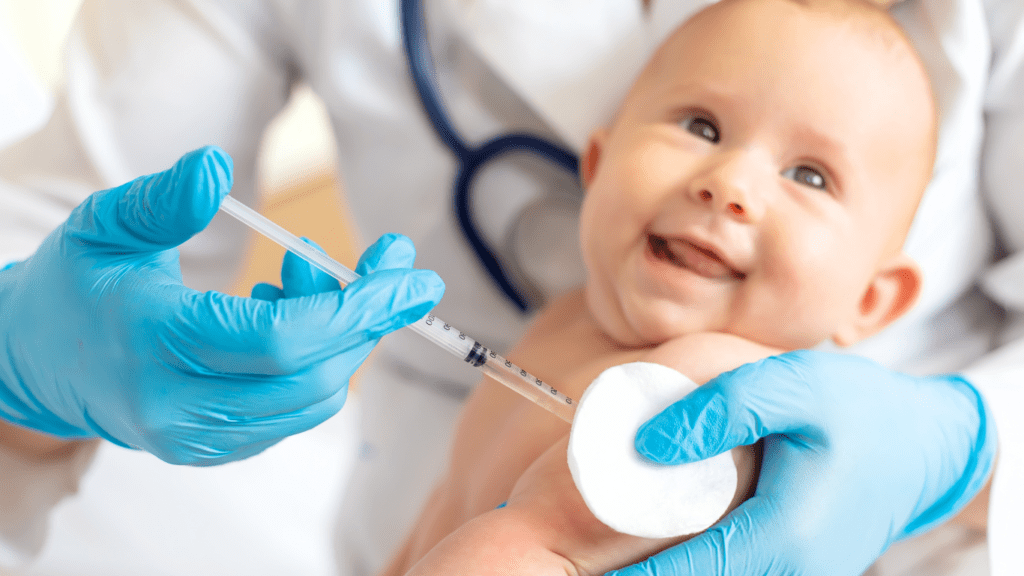Understanding Postpartum Recovery
Postpartum recovery involves physical and emotional healing after childbirth. Each mother’s experience is unique, though commonalities exist. Physical recovery typically includes healing from vaginal or cesarean delivery and managing post-birth symptoms like bleeding and cramps.
Emotional recovery is equally significant. Hormonal shifts can trigger mood swings or postpartum depression. Identifying these signs early helps in seeking appropriate support.
I found sleep disruption a major challenge. Night feeds and diaper changes impact rest, which is vital for recovery. Deep breathing and light stretching helped me relax and manage stress during this period.
Nutrition plays a crucial role. Consuming balanced meals with proteins, vegetables, and whole grains accelerates healing. Hydration is essential, especially for breastfeeding mothers.
Social support can’t be overlooked. Leaning on family and friends eases the burden of new responsibilities. Joining postpartum support groups can also provide valuable emotional and practical advice.
Physical activity gradually returns in postpartum recovery. Light walks and pelvic floor exercises aid in regaining strength. Always consult with healthcare providers before starting any new exercise routine.
Overall, postpartum recovery is a multifaceted process involving physical, emotional, and social aspects. Each step taken towards healing matters in ensuring a smooth transition into motherhood.
Physical Healing
Postpartum recovery significantly impacts a mother’s physical health. It’s crucial to understand the key areas that necessitate attention for optimal healing.
Postpartum Bleeding and Discharge
Postpartum bleeding, also known as lochia, occurs after childbirth. Lochia consists of blood, tissue, and mucus. In the first few days, it’s typically bright red, transitioning to a lighter color over several weeks. Monitoring flow and color changes is essential. If bleeding becomes heavy or has a foul odor, contacting a healthcare provider is recommended.
Perineal Healing
Perineal healing pertains to the recovery of the area between the vagina and anus, especially if there was tearing or an episiotomy. Keeping the area clean and dry helps prevent infection. Sitz baths, which involve sitting in shallow warm water, promote healing. Applying cold packs reduces swelling and discomfort. Pelvic floor exercises like Kegels can enhance muscle strength and aid in recovery.
Cesarean Section Recovery
Cesarean section recovery involves specific care for the incision site. Keeping the incision clean and dry prevents infection. Avoiding heavy lifting and strenuous activity protects the healing site. Monitoring for signs of infection, such as redness or discharge, is necessary. Healthcare providers often recommend gentle walking to boost circulation and reduce the risk of blood clots.
Managing Pain and Discomfort
Pain and discomfort are common postpartum. Over-the-counter pain relievers, as recommended by a healthcare provider, can alleviate discomfort. Using a supportive pillow while sitting or breastfeeding reduces strain. Staying hydrated and maintaining a balanced diet helps the body heal more effectively. Consulting healthcare providers before starting new pain management strategies ensures safety and appropriate care.
Emotional Well-being

Managing emotional well-being after childbirth is crucial for overall postpartum recovery. Hormonal changes, sleep deprivation, and the new responsibilities of motherhood can impact a mother’s mental health.
Postpartum Depression and Anxiety
Postpartum depression (PPD) affects about 1 in 7 mothers within the first year after childbirth. Symptoms include prolonged sadness, lack of energy, and difficulty bonding with the baby. Anxiety, characterized by excessive worry or panic attacks, can also occur. Early identification and seeking professional help, such as counseling or medication, are essential. For instance, contacting a mental health professional if persistent feelings of hopelessness arise can provide necessary support.
Importance of Support Systems
Support systems play a pivotal role in emotional recovery. Family members, friends, and support groups offer emotional and practical assistance. For example, partners or close family members can share household chores, reduce stress, and provide a listening ear. Joining local or online postpartum support groups allows new mothers to connect, share experiences, and gain advice from peers facing similar challenges.
Self-care and Mental Health Strategies
Implementing self-care strategies can enhance mental health. Practices like mindfulness meditation, journaling, and enjoying hobbies provide mental relief. Carving out “me time,” even if it’s just 15 minutes a day, helps rejuvenate. Additionally, maintaining a balanced diet, staying hydrated, and getting adequate rest are fundamental. Seeking help from healthcare providers for specific needs, such as coping techniques for stress or sleep issues, can also be beneficial.
Nutrition and Exercise
Proper nutrition and safe exercise form the cornerstones of postpartum recovery, aiding in physical healing and emotional well-being.
Nutritional Needs Postpartum
Postpartum nutrition impacts recovery and energy levels. Key elements include:
- Protein-Rich Foods: Lean meats, legumes, and dairy support tissue repair.
- Complex Carbohydrates: Whole grains and vegetables provide sustainable energy.
- Healthy Fats: Avocados and nuts are crucial for healing and hormonal balance.
- Vitamins and Minerals: Iron-rich foods (spinach, red meat) combat anemia, and vitamin C (citrus fruits, bell peppers) aids iron absorption.
- Hydration: Water supports overall bodily functions and breastfeeding.
An example of a balanced meal: Grilled chicken, quinoa, steamed broccoli, and a glass of water.
Safe Postpartum Exercises
Exercise must be approached gradually, considering the body’s healing process. Safe activities include:
- Pelvic Floor Exercises: Kegel exercises strengthen muscles weakened during childbirth.
- Light Walking: Brisk walking aids cardiovascular health and mood enhancement.
- Gentle Stretching: Stretching improves flexibility and reduces muscle tension.
Consult a healthcare provider before starting any exercise. Pelvic floor exercises can start within days postpartum, while other activities might require longer healing periods.
Importance of Hydration
Hydration is essential for breastfeeding and overall recovery. Water is the primary choice, but:
- Herbal Teas: They offer hydration and additional health benefits.
- Electrolyte Drinks: These can help if experiencing significant blood loss or sweating excessively.
Aim for at least eight 8-ounce glasses of water daily. Increase intake if breastfeeding or active. Proper hydration supports milk production and energy levels.
Tips for Thriving
Healing after childbirth involves both physical and emotional adjustments. These tips aim to help new mothers not just recover, but thrive during the postpartum period.
Developing a Routine
Creating a consistent daily routine helps reduce stress. I organize my day by setting fixed times for feeding, resting, and gentle exercises. Sticking to a schedule not only supports my recovery but also provides predictability for my baby. I include self-care activities, such as taking short walks or practicing mindfulness meditation.
Managing Sleep Deprivation
Sleep deprivation can be overwhelming. I prioritize rest whenever possible, like napping when my baby sleeps. To manage nighttime awakenings, I establish a calming bedtime routine. Keeping a designated sleep space for my baby close to me, I reduce the stress of frequent night feeds. I use relaxation techniques, like deep breathing, to fall back asleep faster.
Seeking Professional Help
Professional support is vital for postpartum recovery. I consult my healthcare provider to discuss any physical or emotional concerns. If I experience symptoms of postpartum depression or anxiety, I seek help from a mental health professional. Joining a postpartum support group offers me emotional support and practical advice from other mothers.




